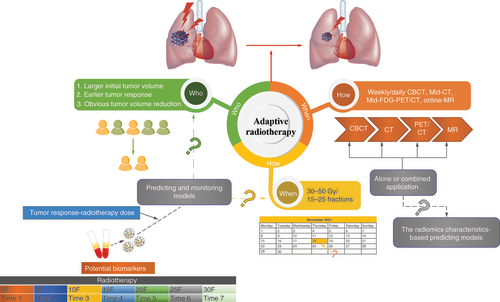Figures & data
Table 1.
Studies relating to the ‘who’ of adaptive radiotherapy in patients with non-small-cell lung cancer.
Table 2.
Studies relating to the ‘when’ of adaptive radiotherapy in patients with non-small-cell lung cancer.
Table 3.
Studies relating to the ‘how’ of adaptive radiotherapy in patients with non-small-cell lung cancer.
Table 4.
Comparison of different forms of image guidance.

